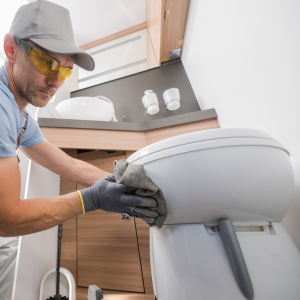How to Freshen Meeting Rooms, Restrooms and Kitchens in the Workplace
Maintaining a fresh and pleasant atmosphere in your workplace isn’t just about cleanliness—it’s also about how your spaces smell. Meeting rooms, restrooms, and kitchens are high-use areas that benefit significantly from targeted scent strategies. Using the right air freshening approach in each of these environments can enhance employee satisfaction, improve client impressions, and support overall hygiene.
Freshening Meeting Rooms
Meeting rooms are often enclosed spaces with limited airflow. As such, they can quickly become stale—especially after long meetings or regular use throughout the day.
Recommended Solutions:
-
Passive air fresheners: Offer a consistent, low-level fragrance without requiring batteries or electricity.
-
Programmable dispensers: Automatically release scent at scheduled intervals, keeping the room fresh throughout the day.
Top Fragrance Choices:
-
Green tea, citrus, or clean linen scents to promote alertness and a professional atmosphere.
Placement Tips:
-
Install units near the door or central wall to allow even fragrance distribution.
-
Avoid placing near vents where scent may disperse too quickly.
Freshening Restrooms
Restrooms are one of the most important areas to manage for odour. Without proper air care, they can quickly become unpleasant and reflect poorly on your business.
Recommended Solutions:
-
Odour neutralisers: Use products that eliminate smells rather than just masking them.
-
Aerosol dispensers: Wall-mounted units can deliver a burst of fragrance on a timer, ideal for continuous control.
-
Urinal & toilet bowl air care systems: Add another layer of freshness at the source.
Top Fragrance Choices:
-
Eucalyptus, floral, or ocean breeze scents for a clean, hygienic feel.
Placement Tips:
-
Use one dispenser per stall cluster or every 10–15 square metres.
-
Place near doors or entranceways to combat odours before they spread.
Freshening Workplace Kitchens
Kitchens are often shared spaces where food prep and waste can cause lingering odours. Left unmanaged, these smells can affect nearby work zones and contribute to a less pleasant office environment.
Recommended Solutions:
-
Spray odour neutralisers: Quick and effective at tackling strong food smells.
-
Discreet passive units: Ideal for continuous background scenting without interfering with food safety.
Top Fragrance Choices:
-
Light citrus, herbal, or mint scents to neutralise food odours without being overpowering.
Placement Tips:
-
Keep away from food preparation areas but close enough to manage bins and waste stations.
-
Consider multiple smaller units rather than one large diffuser.
Insinc’s Air Freshening Solutions
At Insinc, we offer a comprehensive range of air care products tailored to New Zealand workplaces. Whether you’re looking to refresh a meeting room, keep your restrooms odour-free, or neutralise kitchen smells, our Air Fresheners collection has you covered.
Frequently Asked Questions (FAQ)
1. Can I use the same air freshener in every room of the workplace?
While some products are versatile, each space has different scent needs. Kitchens require odour neutralisers, while meeting rooms benefit from subtle, pleasant fragrances.
2. How often should I replace or refill air fresheners in high-use areas?
Typically, passive units last 30–60 days, while aerosol canisters may need replacement every 30 days depending on usage. High-traffic restrooms may require more frequent checks.
3. What’s the best fragrance to use in a shared kitchen space?
Light citrus or mint scents are ideal as they help neutralise food odours without being too strong or clashing with cooking smells.
Posted: Friday 22 August 2025


